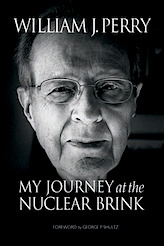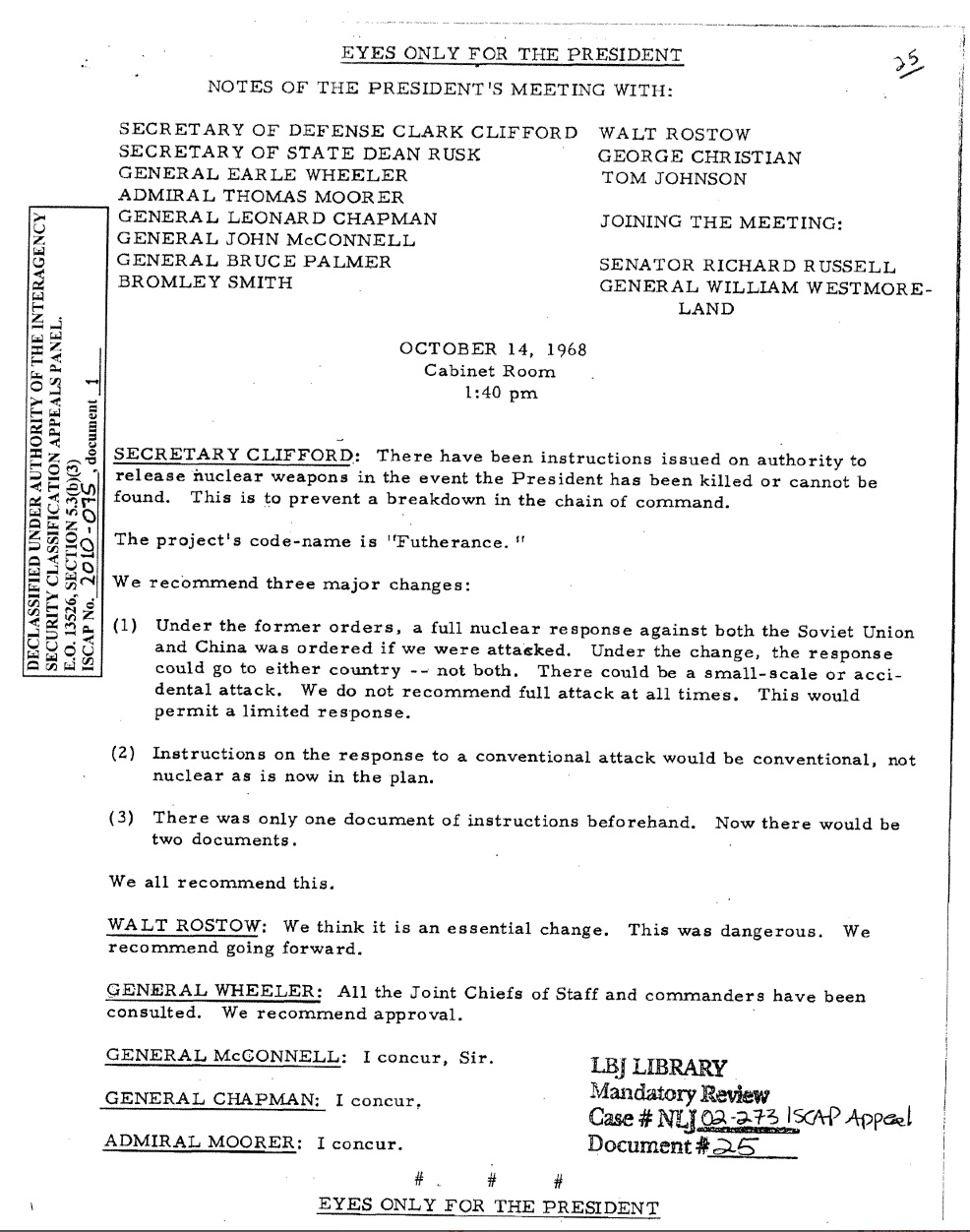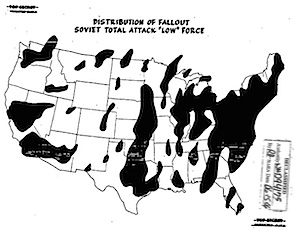Black Saturday, October 27, 1962.
In the midst of the Cuban Missile Crisis, this was the day Vasily Arkhipov did not use the nuclear torpedo against the US ship dropping depth charges on it. It was also the day a US U2 was shot down over Cuba, killing the pilot. It was also the day this happened.
60 yrs ago, the biggest nuclear weapon in the US arsenal was accidentally dropped 5 miles south of Albuquerque, New Mexico
On May 27, 1957, 5 miles south of the Albuquerque airport, a Mark 17 H-bomb (pictured at left) was accidentally dropped from a B-36 Peacemaker on it’s way to Kirtland AFB. The plutonium pit was not on board, but the fissile ‘spark plug’ detonated. Bits of the bomb, the biggest ever deployed by the US at 15-20 megatons, could still be found in the area (see picture below). But the authors of this 2010 report urged the collecting public to hurry, as the area would soon be covered over by a development called “Mesa del Sol”. And so it now is.(source: Carl Willis, “Albuquerque, Ground Zero”)
García-Robles’ Nobel Medal Sold at Auction
Alfonso García Robles drafted the 1967 Treaty for the Prohibition of Nuclear Weapons in Latin America and the Caribbean. He was awarded the Nobel Peace Prize in 1982. He died in 1991. The Treaty of Tlatelolco, as it became known, was the first of its kind and is credited with keeping Latin America and the Caribbean free of nuclear weapons.
Cooperation of US and Russian scientists helped avoid nuclear catastrophe at Cold War’s end
Former Los Alamos National Laboratory director Siegfried Hecker recounts the epic story of how American and Russian scientists joined forces to avert some of the greatest post-Cold War nuclear dangers.
Hecker is currently a senior fellow at Stanford University’s Center for International Security and Cooperation, and a research professor of Management Science and Engineering.
Transcripts Kept Secret for 60 Years Bolster Defense of Oppenheimer’s Loyalty
“…the declassified material, released Oct. 3 by the Energy Department, suggests that Oppenheimer opposed the hydrogen bomb project on technical and military grounds, not out of Soviet sympathies…”
U.S. Had Plans for “Full Nuclear Response” In Event President Killed or Disappeared during an Attack on the United States.
From the Nukevault
Newly declassified document expands limited public record on nuclear “pre-delegation”.
Both USSR and China were to be targeted simultaneously, even if attack were conventional or accidental, and regardless of who was responsible.
LBJ ordered a change in instructions in 1968 to permit more limited response, avert “dangerous” situation.
How A War Game Brought The World To The Brink Of Nuclear Disaster
1983: Once-classified documents show how close Soviet Union came to launching nuclear war
“Chilling new evidence that Britain and America came close to provoking the Soviet Union into launching a nuclear attack has emerged in former classified documents written at the height of the cold war… Cabinet memos and briefing papers released under the Freedom of Information Act reveal that a major war games exercise, Operation Able Archer, conducted in November 1983 by the US and its Nato allies was so realistic it made the Russians believe that a nuclear strike on its territory was a real possibility…”
Studies by Once Top Secret Government Entity Portrayed Terrible Costs of Nuclear War
NESC reports included both Soviet and US first strike scenarios
National Security Archive Electronic Briefing Book No. 480. Posted July 22, 2014.
“The NESC reports on nuclear war were multi-volume, highly classified studies and none has ever been declassified in their entirety. The summaries published here today- for the annual reports from 1957 to 1963- provide a glimpse of the full reports, although important elements remain classified. Besides the summaries and fuller reports for 1962 and 1963, today’s posting includes a number of special studies prepared by the NESC, including an especially secret report requested by President Eisenhower that led to the production of the comprehensive U.S. nuclear war plan in 1960, the Single Integrated Operational Plan (SIOP)…”
My Journey at the Nuclear Brink
 William J. Perry [Former Secretary of Defense]
William J. Perry [Former Secretary of Defense]
Published by Stanford Security Studies, Nov. 2015
Perry argues that nuclear weapons now “endanger our society rather than securing it.” He is one of the founders, along with Sam Nunn, George Schultz, and Henry Kissinger, of the Nuclear Security Project.
In his own words:
“This book is a selective memoir of my experiences with nuclear weapons and nuclear crises, and its purpose is to alert the public to the real and growing dangers of a nuclear catastrophe. I hope you will read this book and learn from it. But I realize that this book, even if effective, will reach only a small audience. In particular, it will reach very few of our young people. The problems I have described are going to be with us for decades, so our young people must play a key role in dealing with them.
Therefore I have undertaken to put these concepts into a form more widely accessible and available to young people. I am doing this through the William J. Perry Project, whose goal is mass education on nuclear dangers… For some years I have taught a course at Stanford about nuclear dangers, and I am now developing that course into an online course that has the potential to reach not just hundreds of students, but hundreds of thousands… The broader series of educational materials under development is called “Nuclear Weapons: 20th-Century History, 21st-Century Decisions,” or 20-21 for short. We not only want people to understand the history, but to engage in current-day issues facing the United States, such as the impending nuclear arms race and the danger of a resumption of nuclear testing.
I hope to encourage young people to take the baton I am trying to pass to them. My generation created this existential problem- their generation must find a way to solve it.”
New York City, 1982: One Million Rally for Nuclear Freeze
On June 12, 1982, one-million concerned citizens gathered in Central Park in New York in an unprecedented call for “the United States and the Soviet Union . . . to adopt a mutual freeze on the testing, production, and deployment of nuclear weapons.” A few months later, Freeze referenda were on the ballots in 9 states and dozens of major cities. Across the nation some 18 million Americans voted on the Freeze in the fall of 1982, with some 10.7 million, or 60 percent, voting in favor.
As Congressman Ed Markey (D-Mass.) said years later:
“It was the closest our country has ever come to a national plebiscite on nuclear arms control. Within a very brief time the freeze had taken education at the grassroots and translated it into political muscle at the ballot box, delivering to the White House a resounding vote of no confidence in its nuclear buildup.”
Resources
Nothing Found
It seems we can’t find what you’re looking for. Perhaps searching can help.
Quotes
Nothing Found
It seems we can’t find what you’re looking for. Perhaps searching can help.


